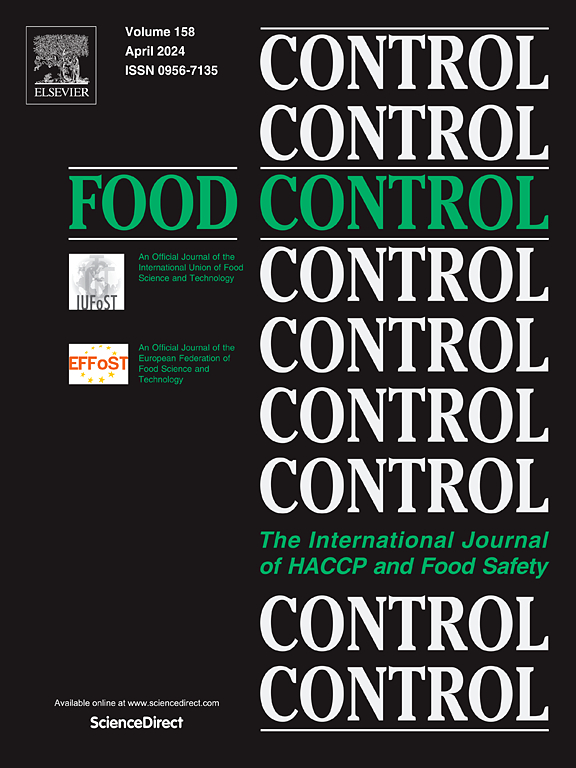An extensive pesticide residue study in minor polish vegetables based on critical consumer diets
IF 5.6
1区 农林科学
Q1 FOOD SCIENCE & TECHNOLOGY
引用次数: 0
Abstract
Pesticides are important hazards affecting food safety. The number of approved active substances in European Union (EU) for minor crops has declined, causing problems for vegetable protection. Therefore, the first purpose of this large−scale study was to assess the occurrence of pesticides in Polish minor crops (590 samples), including bulb, brassica, root and tuber, leafy, stem, fruiting, and legume vegetables. Moreover, the second purpose was the estimation of toxicological health risk. Pesticides were found in 39.8 % of samples, including not approved pesticides (10.3 %). Of the 535 compounds, 53 were detected by GC–LC/MS/MS (up to 7.6 mg kg−1). Pendimethalin and not approved chlorpyrifos were the most frequently determined. EU maximum residue level (MRL) exceedances were noted in 5.1 % of samples and the highest was recorded for chlorpyrifos in dill. Not acceptable acute health risk was determined for children consuming parsnip which contained linuron (180.6 %) and lettuce with beta−cyfluthrin (125.6 %) and chlorpyrifos (114.2 %) residues. The study highlighted the need for pesticide monitoring and the implementation of innovative solutions in agricultural practice to protect Polish minor crops in the fields.
基于关键消费者饮食的少量波兰蔬菜中农药残留的广泛研究
农药是影响食品安全的重要危害。欧盟(EU)批准的用于小型作物的活性物质数量有所下降,给蔬菜保护带来了问题。因此,这项大规模研究的第一个目的是评估波兰小型作物(590个样本)中农药的使用情况,包括球茎、芸苔、根和块茎、叶、茎、果实和豆类蔬菜。此外,第二个目的是估计毒理学健康风险。39.8%的样品中检出农药,其中不合格农药占10.3%。在535个化合物中,53个通过GC-LC /MS/MS检测到(高达7.6 mg kg−1)。戊二甲基灵和未获批准的毒死蜱是最常见的。在5.1%的样品中发现了欧盟最大残留水平(MRL)超标,其中毒死蜱在莳萝中最高。对于食用含有linuron(180.6%)的防风草和含有-氟氯菊酯(125.6%)和毒死蜱(114.2%)残留的生菜的儿童,确定了不可接受的急性健康风险。该研究强调需要对农药进行监测,并在农业实践中实施创新解决办法,以保护波兰田间的小作物。
本文章由计算机程序翻译,如有差异,请以英文原文为准。
求助全文
约1分钟内获得全文
求助全文
来源期刊

Food Control
工程技术-食品科技
CiteScore
12.20
自引率
6.70%
发文量
758
审稿时长
33 days
期刊介绍:
Food Control is an international journal that provides essential information for those involved in food safety and process control.
Food Control covers the below areas that relate to food process control or to food safety of human foods:
• Microbial food safety and antimicrobial systems
• Mycotoxins
• Hazard analysis, HACCP and food safety objectives
• Risk assessment, including microbial and chemical hazards
• Quality assurance
• Good manufacturing practices
• Food process systems design and control
• Food Packaging technology and materials in contact with foods
• Rapid methods of analysis and detection, including sensor technology
• Codes of practice, legislation and international harmonization
• Consumer issues
• Education, training and research needs.
The scope of Food Control is comprehensive and includes original research papers, authoritative reviews, short communications, comment articles that report on new developments in food control, and position papers.
 求助内容:
求助内容: 应助结果提醒方式:
应助结果提醒方式:


